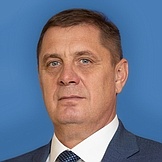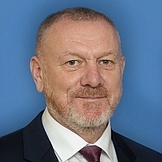Regional flags and emblems


PROFILE
Established 10 January 1934
Capital Volgograd
The Volgograd Region is part of the Southern Federal District
Area 112,900 sq km
Population 2 434 000 (2025)
Ethnic groups
(2020 National Census, %)
Russian – 92,52
Kazakh – 1,68
Other – 5,80
Administrative divisions (2024)
Municipal districts – 32
City districts – 6
Rural towns – 29
Rural districts – 399
Geography and climate
The Volgograd Region is located in the southeast of the East European Plain. The Volga and the Don with their tributaries are the main rivers; there are about 200 small rivers in total. Volgogradskoye and Tsimlyanskoye are the largest water reservoirs. The region borders the Saratov, Voronezh, Rostov and Astrakhan regions as well as the Republic of Kalmykia, and has a state border with Kazakhstan.
The region has a continental climate. The average January temperature is −7.4˚С. The average July temperature is +23.7˚С. Monthly precipitation in January is 30 mm, in July – 17 mm. The vegetation period lasts 150 days in the north and up to 175 days in the south. Flora: coniferous and leafy forests (pine, oak, ash, elm, maple, birch, aspen, alder, linden, poplar, willow), mixed grass steppe and sagebrush semi-deserts. The soil is black, dark brown and light chestnut.
On the territory of the Vologda Region there are 7 nature parks and 19 natural monuments.
Government
The legislative branch is represented by the Volgograd Regional Duma, which is the permanent, supreme and only body of legislative (representative) authority in the region.
The Volgograd Regional Duma has 38 deputies, who are elected for a term of five years. Nineteen deputies are elected in the single-mandate constituencies and the other 19 are elected in the single electoral district, where winners are identified in proportion to the number of votes cast for lists of candidates nominated by electoral associations. The current Volgograd Regional Duma was elected in September 2024. Its term expires in September 2029.
The executive branch is the Governor of the Volgograd Region, the Administration of the Volgograd Region and executive authorities of the region. The Administration of the Volgograd Region is the supreme and permanent body of executive authority in the region.
The Governor of the Volgograd Region is the region’s highest-ranking official, who forms and heads the Administration of the Volgograd Region. He is elected for five years by Russian citizens who permanently reside in the region. The term of office of the incumbent Governor expires in September 2029.
Economy and natural resources
The Volgograd Region is one of the most developed Russian regions with a balanced economic structure. The multi-industry agricultural sector combines with various industries and oil and gas deposits. The two largest navigable rivers connected by the Volga–Don Canal cross the region. There is also the Volga Hydroelectric Power Station.
The share of industrial production in the regional GDP amounts over 30%.
The main industries include machine building, metal processing (producing tractors, vessels, tower cranes and bearings; equipment for the oil, electro-technical and food industries; drilling, storage, medical and trade equipment); fuel (oil and gas production), oil refining, chemicals, petrochemicals (including the production of caustic soda and synthetic fibre) and ferrous and non-ferrous metals. The construction material production, textile, wood processing and food industries are also well-developed in the region. The Volgograd Region holds a monopoly in Russia on the manufacture of over 10 types of products, such as several kinds of bearings, sulfur dioxide, polyurethane threads and gas pipes. The Volgograd Aluminium Plant, LUKOIL-Volgogradneftepererabotka, Volzhsky Pipe Plant, Profil-Akras Pipe Plant, Volzhsky Abrasive Works, Volgogradneftemash, Krasny Oktyabr Metallurgical Plant, Volzhsky Orgsyntez Chemical Plant, JSC Kaustik are the region’s largest industrial enterprises.
Light industry includes over 200 enterprises, the largest of them are the Kamyshin Cotton Factory, Roskontrakt-Kamyshin (textile branch), Tsaritsyn Joint Manufacture (sewing), Uryupinsk Knitwear, AORA (knitwear), Footwear Factory, SOFT (leather and fancy articles), Fakel and Svetloyarsk Wool (fur). The enterprises are spread unequally: the textile industry is concentrated in Kamyshin, knitwear, in Uryupinsk and Volgograd, and primary wool processing, in the Svetloyarsk District. There also are sewing, shoe, leather and hat manufacturing businesses in Volgograd. Textile products account for the largest share of commodity goods production (up to 80%).
The Volgograd Region has well-developed agriculture and is one of Russia’s largest agricultural regions. It has great nature and climate potential, which allows the region not only to meet domestic demands but also influence the Russian food market. Crop production accounts for about 70% of agricultural products (high-quality grain, corn, cereals, oil crops and their seeds, vegetable oil, vegetables, fruit and gourds), and livestock breeding, for 30% (pork, cattle, poultry and sheep).
Culture and tourism
The Volgograd Region has a rich cultural heritage related to the everyday life of indigenous people, Cossacks, Volga Germans and other ethnic groups. Over 2,600 historical and cultural sites (including architectural and archaeological monuments) are protected by the state. There are 34 local lore museums, including five state ones: the Volgograd Regional Local Lore Museum, the Battle of Stalingrad State Historical and Memorial Museum Reserve (federal), the Staraya Sarepta (Old Sarepta) State Historical, Ethnographic and Architectural Museum Reserve, the Volgograd Fine Arts Museum and the Volgograd Regional Children’s Art Gallery.
The memorial complex To the Heroes of the Battle of Stalingrad built on Mamayev Kurgan, the historical site that saw one of the most cruel and sanguinary battles in September 1942 – January 1943, has international and national significance. The regional museums have remarkable archeologic, ethnographic and numismatic as well as unique historical collections.
The Volgograd State Academic Symphonic Orchestra and the Volga Folk Orchestra play a very important role in the region’s musical culture. Both orchestras are based at the Volgograd Regional Philharmonic Hall. The Ulybka (Smile) Dance Company at the Volgograd Regional Children’s Philharmonic Hall is one of Russia’s best children’s companies. There are Russian (Cossacks), Ukrainian, Belarusian, Tatar, Kazakh, Kalmyk, German, Chechen and Chuvash ethnic art companies in the region.
The Volgograd Region is one of the best places for family recreation. The region has up to 120 sunny days per year, and boasts almost 200 rivers. Both large rivers (the Volga and Don with sand beaches) and the small ones (Khoper, Medveditsa, Ilovlya and Akhtuba with picturesque valleys) are good for swimming. Anglers and hunters can enjoy the Volga-Akhtuba Floodplain with its abundant fish and game and have a nice stay at a tourist base and the Letuchaya Ryba fishing village in the village of Karshevitoye, the Lenin District. Tourists can also visit Lake Elton with its therapeutic salts and muds, for rehabilitation. Cave explorers may be interested in the understudied manmade caves of Urakov Bugor. Those interested in history and archaeology can spend a pleasant time in Volgograd museums as well as in the Staraya Sarepta Museum Reserve and the Cossack Ethnographic Museum.


